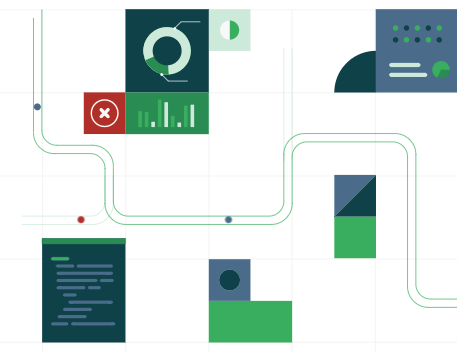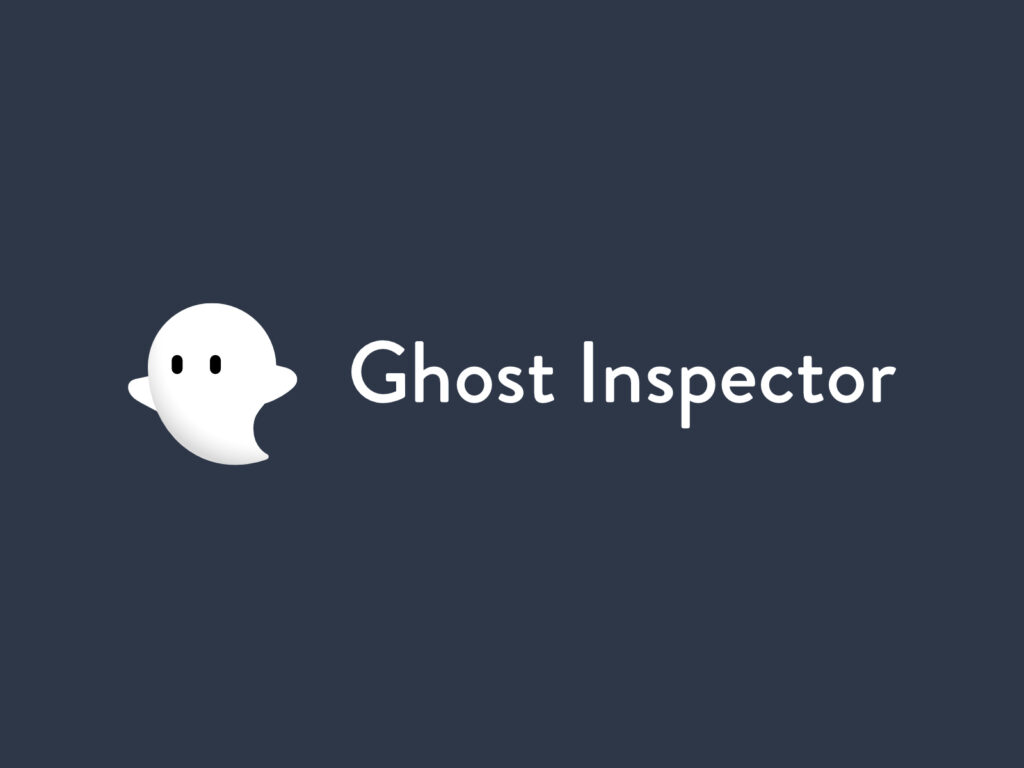Modern development strategies rely on continuous integration and continuous delivery (CI/CD) to ship high quality software and updates. A well-designed CI/CD pipeline automates key parts of the software development lifecycle so teams can build, test, and deploy changes faster with fewer errors. To achieve this, development teams need the right CI/CD tools.
Before you select your CI/CD solutions, you need to understand CI/CD pipelines and how they work. This article explains CI/CD in detail, covers the top 10 tools and their features, and tells you how an automated web testing tool like Ghost Inspector can help speed up your workflows.
Let’s get started.
Table of Contents
Boost your CI/CD pipeline with Ghost Inspector automated testing
Our 14 day free trial gives you and your team full access. Create tests in minutes. No credit card required.
What is CI/CD?
A CI/CD pipeline allows developers to efficiently integrate, test, and deploy their code changes. It consists of two main parts:
Continuous Integration (CI)
This part of the pipeline focuses on integrating work from multiple developers into the main branch as frequently as possible.
In the Continuous Integration process, developers’ changes are automatically built, and tests are run against these changes to ensure they don’t hinder app functionality.
This process helps identify and fix integration errors quickly and improves software quality.
Continuous Delivery or Continuous Deployment (CD)
This process is an extension of CI and automatically deploys all code changes to a staging or testing environment after building.
In Continuous Delivery, the decision to deploy to production is manually made so the operations team can control when and how to release features. When using Continuous Deployment, every change that passes your production pipeline is automatically released to customers without human intervention.
These processes form the backbone of a modern DevOps or Agile development strategy, making software development efficient and error-free.
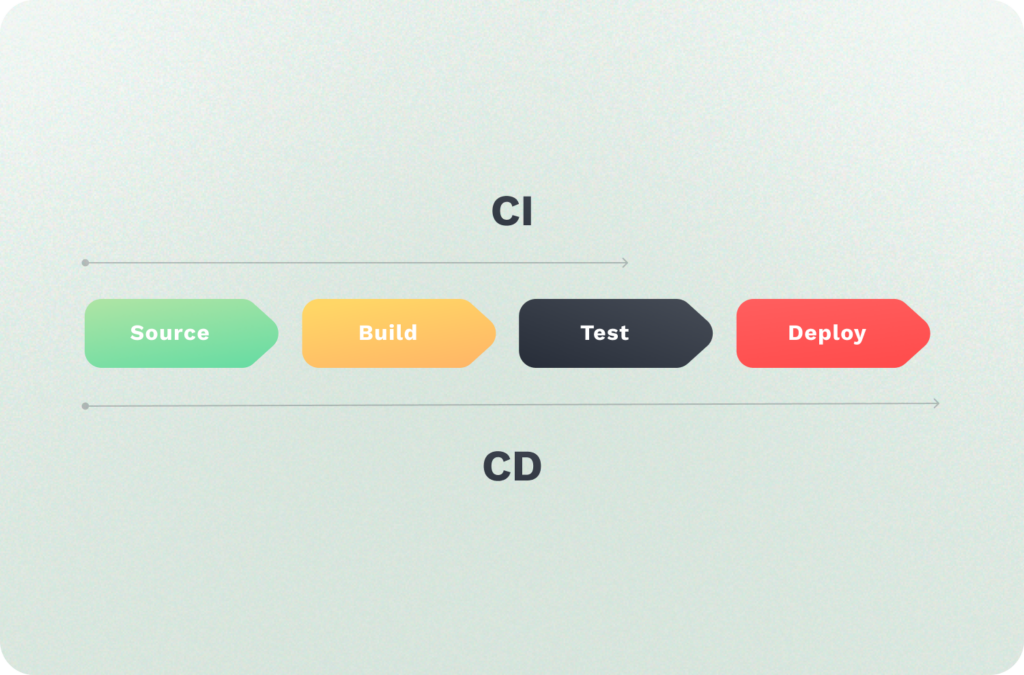
A CI/CD tool is a platform that automates the steps involved in continuous integration and delivery, facilitating rapid and reliable development and deployment. A combination of CI/CD tools is used to create a CI/CD pipeline.
A vital part of this CI/CD pipeline is continuous automated testing, which creates rapid feedback loops that instantly check code changes for errors and alert developers so they can fix issues quickly.
To enable automated testing in their pipelines, software development teams use web testing tools that integrate with popular CI/CD pipeline tools.
Why are CI/CD tools important?
CI/CD pipeline tools provide five major benefits to developers, testers, and QA teams:
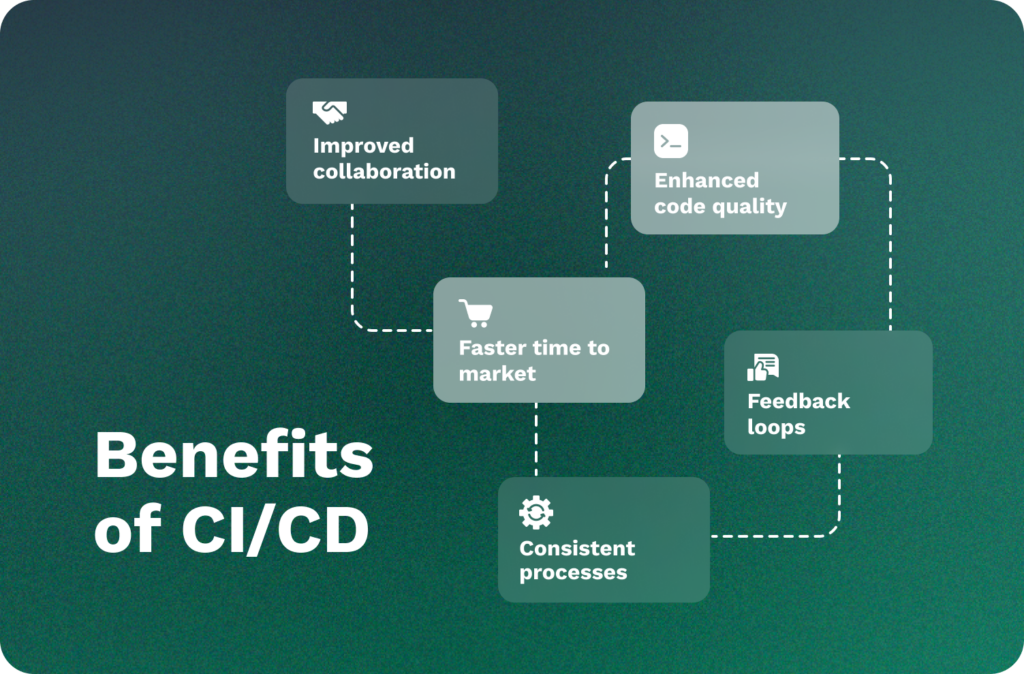
- Improved collaboration: CI/CD tools encourage constant code merges and ensure developers work on the latest codebase version, reducing code integration conflicts. They also foster transparency throughout development via dashboards and notification systems.
- Enhanced code quality: CI/CD solutions help create standardized processes and use automated testing to reduce mistakes and catch bugs early. This simplifies debugging and ensures code quality is maintained throughout the development lifecycle.
- Faster time to market: The best CI/CD tools drastically increase the speed of code releases. Automated building and testing eliminate many manual steps in software delivery, speeding up the entire process from code commit to deployment.
- Feedback loops: Immediate feedback on the integration and deployment processes is another major advantage. CI/CD pipelines provide developers with instant information about the success or failure of their changes. This helps in fast error fixes and boosts overall code quality by allowing developers to make informed improvements continuously.
- Consistent processes: CI/CD tools help establish standardized, repeatable processes for building, testing, and deploying software. This standardization reduces the chance of errors and increases the reliability of the deployment process. These tools also encourage better documentation and adherence to best practices.
Properly implementing CI/CD tools leads to a more robust software development process and enables organizations to respond swiftly to market demands.
How to implement an effective CI/CD pipeline
Here’s a general guide to setting up your CI/CD pipeline:
- Version control setup: First, create a solid foundation using a version control system (VCS) like Git. To manage the development flow, organize your repository with clear branch structures (such as main, develop, and feature branches). This setup helps you track every change and enables easier integration and rollbacks.
- Select a CI/CD tool: Choose a CI/CD pipeline platform that integrates well with your version control system and other tools and fits your project’s needs. Consider platform compatibility, scalability, and your team’s learning curve.
- Define the pipeline: Then, you can define the stages of the pipeline. Typically, these phases are divided into build, test, and deployment. Use configuration files to set up these stages based on your project’s requirements. Your pipeline must be equipped to handle everything from pulling the latest code from VCS to deploying it to production.
- Automate testing: Incorporate automated testing in your pipeline to ensure quality. This includes unit, integration, and acceptance tests, which should run every time changes are integrated into the main branch. Automated regression testing is also needed for web applications.
- Feedback loops: Use APIs that support automated alerts via email, Slack, or other channels to create mechanisms that provide immediate feedback to developers. You can configure alerts to be triggered by build or test failures.
- Monitoring and optimization: Continuously monitor your pipeline’s performance and identify opportunities for optimization. This can include reducing build times, improving test coverage, or streamlining deployment processes.
Following these steps, you can implement a CI/CD pipeline that boosts your team’s productivity and enhances product quality and operational efficiency. Development teams must optimize the pipeline regularly so that it remains effective and aligns with evolving project needs.
To build a well-functioning pipeline, you need to use the best CI/CD tools. These platforms can significantly simplify building and deployment management. Let’s look at some of the current top tools.
How to integrate automated web testing into CI/CD
Automated web testing strengthens CI/CD by validating the parts of an application that users interact with most. While unit and integration tests check code behavior, they cannot confirm that real user journeys work correctly in the browser. Adding automated web tests to the pipeline helps teams catch UI issues, broken interactions, layout problems, and cross-browser inconsistencies early.
Most teams add automated web testing to CI/CD by following a simple process:
- Deploy the updated application to a test environment
- Run browser-based tests that simulate real user activity
- Check important flows such as sign-in, navigation, search, and checkout
- Use pass or fail results as quality checks before deployment continues
CI/CD tools like Jenkins, GitHub Actions, GitLab CI, and CircleCI make it easy to trigger these tests during each pipeline run. As teams release more frequently, reliable browser testing becomes an important layer of protection, helping prevent UI regressions and reducing the risk of shipping broken user experiences. This is the point where dedicated web testing platforms like Ghost Inspector become especially valuable inside CI/CD workflows.
Top 10 CI/CD tools in 2026
Here are 10 popular CI/CD tools used by software development teams and their main features:
1. Jenkins

Jenkins is an open-source automation server. Developers can use Jenkins as a CI server or a continuous delivery hub for projects.
Key features:
- Extensive plugin: Offers over 2,000 plugins to integrate with virtually any tool in the CI/CD spectrum, including web testing platforms like Ghost Inspector.
- Highly customizable: Jenkins can be modified and extended through its plugin architecture, supporting a wide range of workflows and tools.
- Scriptability: Allows users to write complex pipelines using Jenkins Pipeline (Groovy) scripting.
- Strong community: Backed by a large community that provides updates and helps troubleshoot issues.
Pros
- Highly customizable with one of the largest plugin ecosystems
- Free and open source
- Supports nearly any workflow through plugins and scripts
- Strong community and long history in CI/CD
Cons
- Requires ongoing maintenance and manual server management
- UI feels outdated compared to cloud-native tools
- Plugins can introduce compatibility issues
Use Cases
Jenkins is ideal for engineering teams that want full control, self-hosted CI/CD, or complex pipelines that use multiple languages and environments. It is commonly used in enterprise environments and hybrid on-premises setups.
Where Ghost Inspector automated testing fits
Teams using Jenkins often add automated web tests to validate UI behavior during builds. Ghost Inspector can be integrated through webhook or CLI steps so pipelines run browser tests as part of deployment checks.
2. Azure DevOps

Microsoft Azure DevOps provides developer services for teams to plan work, collaborate on code development, and deploy applications. Among other features, it offers Azure Pipelines to automate continuous testing and deployment.
Key features:
- Cross-platform support: Works across platforms with any language, targeting any platform.
- Integration with Azure: Connects with various Azure services and features, enhancing cloud-based workflows.
- Built-in CI/CD: Offers built-in continuous integration and continuous delivery capabilities, with native integration into GitHub.
Pros
- Complete suite including repos, boards, pipelines, and artifacts
- Strong enterprise security and governance
- Excellent integration with Azure services
- Works with Windows, Linux, macOS, and containers
Cons
- Best suited for Azure centered environments, which may feel limiting for teams that primarily use other cloud providers.
- Can feel complex for small teams
Use Cases
Best for organizations using Microsoft Azure or teams needing enterprise-level compliance, multi-stage deployments, and deep visibility across development workflows.
Where Ghost Inspector automated testing fits
Teams can include Ghost Inspector test runs in Azure Pipelines to check browser behavior in staging environments.
3. GitLab
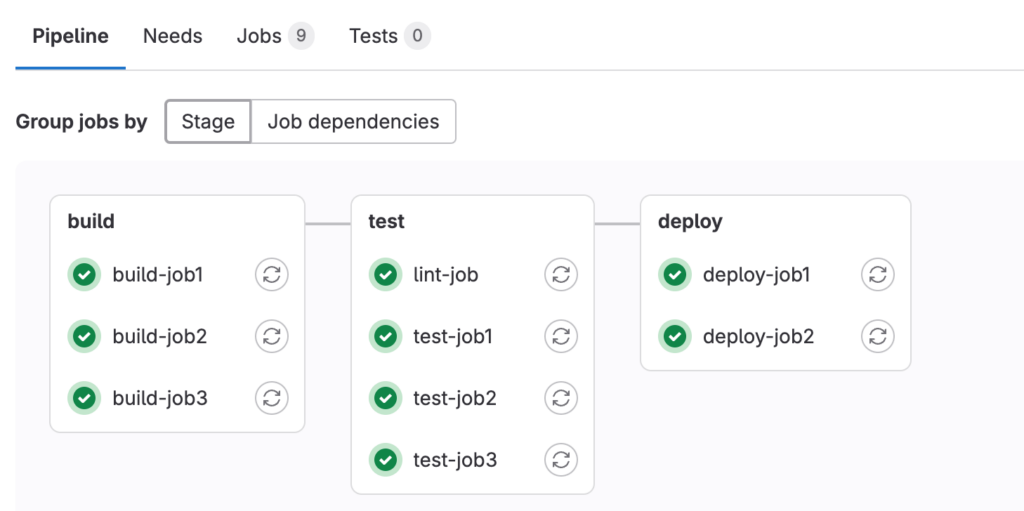
GitLab is an AI-powered DevSecOps platform that can be used for the entire DevOps lifecycle, from project planning and source code management to CI/CD, monitoring, and security.
Key features:
- Integrated CI/CD: Native CI/CD capabilities make it easier for teams to stay synchronized.
- Auto DevOps: Automatically configures CI/CD pipelines with built-in best practices.
- Comprehensive toolset: Includes issue tracking, source code management, release orchestration, and more.
- High scalability: Supports scaling from small teams to large enterprises.
Pros
- Fully integrated DevSecOps platform
- Built-in CI/CD that requires minimal setup
- Supports Auto DevOps for rapid pipeline creation
- Strong security scanning and code quality tools
Cons
- Premium features require paid tiers
- Self-hosted installations can be resource-heavy
Use Cases
Great for companies that want all DevOps tools in one place, including planning, version control, CI/CD, and security. Works well for both small and enterprise teams.
Where Ghost Inspector automated testing fits
GitLab CI jobs can call Ghost Inspector through simple API or CLI steps to add browser test coverage to pipeline stages.
4. GitHub Actions
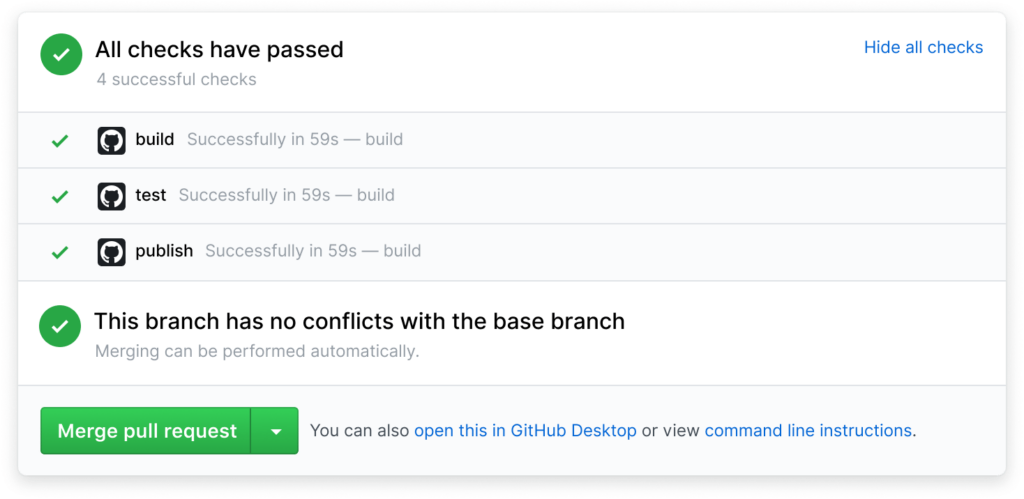
GitHub Actions enables workflow automation with CI/CD capabilities directly in GitHub. DevOps engineers and developers can quickly start workflows with GitHub events, like issue creation or push, and configure actions to automate the services they use.
Key features:
- Deep integration with GitHub: Integrates with GitHub repositories for CI/CD pipelines.
- Custom workflows: Users can create custom actions and automate workflows to build, test, and deploy their code.
- Community-driven actions: Leverage actions shared by the GitHub community to extend functionality.
- Matrix builds: GitHub Actions supports running multiple versions of your project in parallel.
Pros
- Native GitHub integration with event-based triggers
- Thousands of ready-to-use community actions
- Supports matrix builds and multiple OS environments
- Simple onboarding for GitHub users
Cons
- Runner usage costs can grow quickly
Less suitable for teams needing full on-premise control
Use Cases
Perfect for teams storing repositories on GitHub who want automated workflows directly in their development environment.
Where Ghost Inspector automated testing fits
Ghost Inspector tests can be triggered during pull request checks or post-deployment workflows to verify UI behavior.
5. Bamboo

Bamboo Data Center is a continuous delivery pipeline platform that ties automated builds, tests, and releases in a single workflow.
Key features:
- Jira integration: Deep integration with Atlassian products like Jira and Bitbucket.
- Real-time visibility: Provides visibility into the delivery pipeline and offers performance metrics.
- Pre-built functionalities: Unlike Jenkins, most common functionalities are out-of-the-box without plugins.
- Deployment projects: Supports environment-specific configurations and tracks release progress.
Pros
- Tight integration with Atlassian tools like Jira and Bitbucket
- Many core features available without plugins
- Strong release and deployment management
- Clear visibility into pipeline performance
Cons
-
Data Center lifecycle risk: Atlassian has announced Data Center end-of-life timelines that include Bamboo Data Center, which can affect long-term planning for net-new adoption (and may require a future migration plan).
Requires self-hosting and infrastructure maintenance
- Not as flexible as modern cloud-based CI/CD tools
Use Cases
Bamboo Data Center can make sense for organizations that are already deeply invested in Atlassian’s self-managed stack and want CI/CD closely integrated with their existing workflows. For new CI/CD evaluations, teams should weigh Bamboo’s capabilities against Atlassian’s published Data Center timeline and their own migration horizon.
Where Ghost Inspector automated testing fits
Bamboo deployments can include automated web testing through Ghost Inspector to confirm user-facing flows before release.
6. CircleCI
CircleCI is a CI/CD platform that automates builds across multiple environments, with a focus on speed and reliability. It offers a cloud-based solution, CircleCI Cloud, and an on-premise or self-hosted platform, CircleCI Server.
Key features:
- Highly scalable: Efficiently handles projects of any scale and is often used for large-scale workflows.
- Docker support: Native Docker support to build and test in containerized environments.
- Configuration as Code: Pipelines are configured through a YAML file. It also supports most programming languages out of the box.
- Insights dashboard: Offers detailed insights into pipelines and workflows.
Pros
- Fast, scalable cloud performance
- Excellent container and Docker support
- Clean YAML configuration
- Strong parallelism for faster pipelines
Cons
- Costs may increase with team size and pipeline volume
- Self-hosted version is less advanced than cloud
Use Cases
Great for teams creating containerized applications, microservices, and cloud-native software with fast iteration cycles.
Where Ghost Inspector automated testing fits
CircleCI workflows can run Ghost Inspector tests after the application is built to detect UI regressions early.
7. JetBrains TeamCity
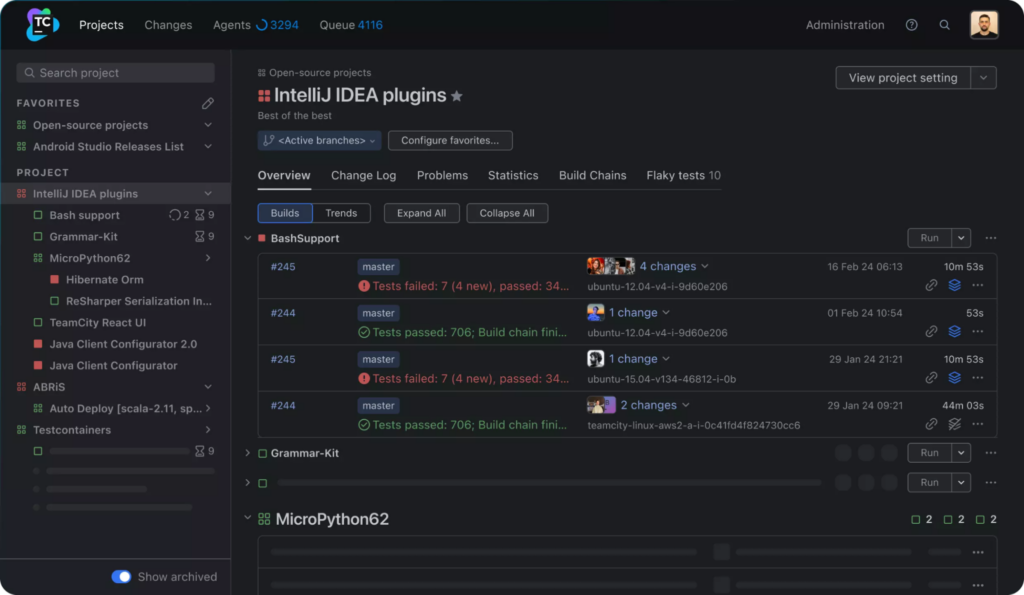
JetBrains TeamCity is a powerful and user-friendly CI/CD solution that supports multiple platforms and environments.
Key features:
- On-the-fly build progress: Allows for modifications to build procedures during runtime.
- Reusable build configurations: Build configurations are templates that can be reused across multiple projects.
- Plugins for Integrated Development Environments (IDEs): Offers integration with IntelliJ IDE and other JetBrains IDEs.
- Comprehensive VCS Support: Supports a wide range of version control systems.
Pros
- Strong on-premise and hybrid support
- Reusable build templates
- Deep integration with JetBrains IDEs
- Flexible and powerful for complex workflows
Cons
- Can be more complex than lightweight CI/CD tools
- Requires server management
Use Cases
Ideal for enterprises or teams using JetBrains tools that need advanced build pipelines and flexible configurations.
Where Ghost Inspector automated testing fits
Ghost Inspector test commands can be added to TeamCity build steps to include browser testing in the release pipeline.
8. Travis CI

Travis CI is used to build and test projects hosted on GitHub. It is a distributed continuous integration service. Users can choose Travis CI Cloud for automating open-source projects and Travis CI Enterprise for self-hosted CI/CD.
Key features:
- Easy to set up: Minimal setup is required to start testing new projects.
- Build matrix: Allows parallel testing across combinations of different environments, runtimes, and languages.
- Integrations: Ready-made integrations with other CI/CD tools, Code Climate, Hashicorp Vault, and Sonar Cloud, to create a smooth process. Users can also create custom integrations.
Pros
- Simple setup, especially for GitHub projects
- Supports matrix builds for multiple environments
- Strong open-source adoption
- Easy-to-read YAML configuration
Cons
- Adoption has slowed in recent years
- Some enterprise features lag behind competitors
Use Cases
Good for smaller teams, open-source contributors, and projects needing straightforward CI.
Where Ghost Inspector automated testing fits
Travis CI builds can run Ghost Inspector suites to add UI coverage during the build process.
9. Docker
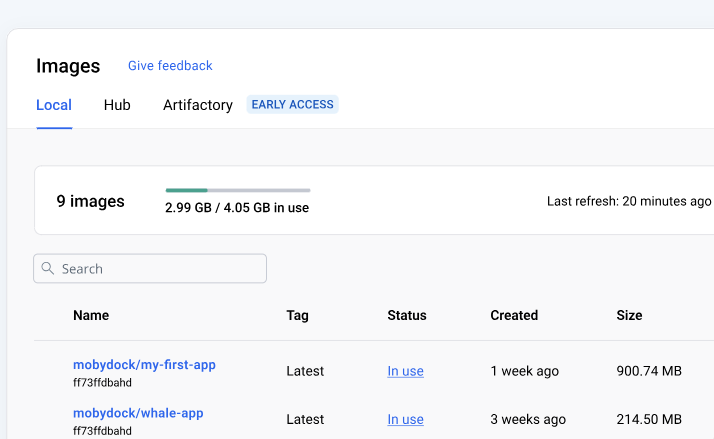
Docker enables developers to build, deploy, and manage applications inside lightweight, portable, self-sufficient containers or images. Most CI/CD tools use Docker Images or integrate with the platform to create environments that require consistent, reproducible configurations.
Key features:
- Container management: Simplifies the creation and management of containers.
- Docker Hub: Provides a vast library of container images.
- Docker Build Cloud: Offers cloud-based image builds for faster development.
- Integration with CI Tools: Easily integrates with existing CI/CD tools to streamline container workflows.
- Consistency across environments: Ensures consistency across different development, testing, and production environments.
Pros
- Consistent, reproducible containerized environments
- Works with nearly all CI/CD platforms
- Docker Hub provides extensive image libraries
- Supports fast and isolated builds
Cons
- Not a complete CI/CD tool on its own
- Requires orchestration and external testing tools
Use Cases
Perfect for microservices, containerized deployments, and reproducible builds across CI/CD pipelines.
Where Ghost Inspector automated testing fits
Teams using Dockerized test environments often include Ghost Inspector tests to validate browser flows against containerized apps.
10. Buddy
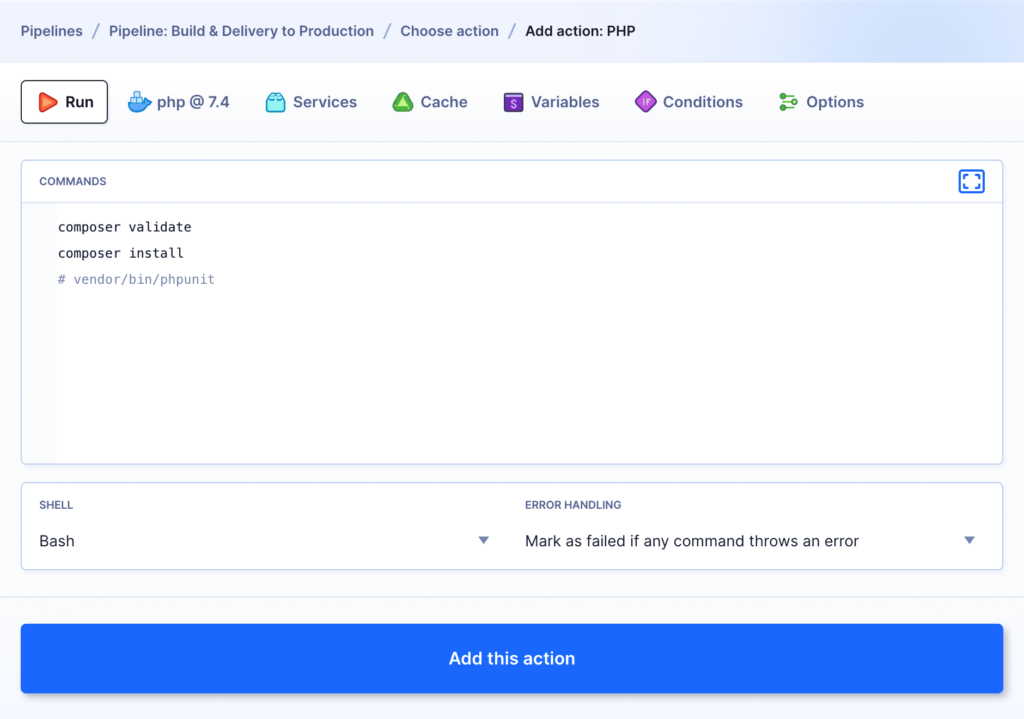
Buddy is a CI/CD pipeline tool designed for speed and simplicity. It uses Docker containers with pre-configured development environments.
Key features:
- Comprehensive automation: Supports over 100 actions to automate all aspects of web development.
- Concurrent pipelines: Users can run tasks and tests in parallel to reduce build times. Reusable environments also speed up development.
- High performance: Known for its quick setup, fast performance, and vCPU and RAM scaling.
- Intuitive interface: Provides a graphic-based interface so developers and QA teams can create CI/CD workflows in minutes.
Pros
- Very fast pipelines using Docker-based actions
- Clean, visual interface
- Supports parallel and concurrent pipelines
- Easy to configure for web development teams
Cons
- Smaller ecosystem compared to major providers
- Fewer enterprise offerings
Use Cases
Ideal for small and medium teams that want intuitive, fast CI/CD pipelines without heavy configuration.
Where Ghost Inspector automated testing fits
Buddy pipelines can call Ghost Inspector tests as part of their post-deployment checks to verify core user journeys.
Choosing the right CI/CD tool: Comparison table
Tool |
Hosting |
Best For |
Strengths |
Limitations |
| Jenkins | Self-hosted | Enterprises, complex workflows | Highly customizable, large plugin ecosystem | Requires maintenance and setup |
| Azure DevOps | Cloud or self-hosted | Azure users, enterprises | Full DevOps suite, strong governance | Best features optimized for Azure |
| GitLab CI | Cloud or self-hosted | All-in-one DevSecOps teams | Integrated CI/CD, security scanning | Some features require paid tiers |
| GitHub Actions | Cloud | GitHub-based teams | Easy workflow automation, community actions | Runner costs scale with usage |
| Bamboo | Self-hosted | Atlassian users | Native Jira integration, strong release management | Requires infrastructure maintenance |
| CircleCI | Cloud or self-hosted | Containerized workflows | High performance, Docker support | Cost grows with usage |
| TeamCity | Self-hosted | Large codebases, JetBrains users | Powerful configuration, IDE integration | More complex for smaller teams |
| Travis CI | Cloud | Open-source projects | Simple configuration, easy setup | Declining enterprise adoption |
| Docker | Cloud or local | Container-native workloads | Consistent environments, fast builds | Not a full CI/CD tool alone |
| Buddy | Cloud | Web-focused teams | Visual workflows, fast pipelines | Smaller ecosystem |
CI/CD trends in 2026
CI/CD practices continue to evolve as development teams adopt new tools, cloud technologies, and automation strategies. Several key trends are shaping how teams build and maintain pipelines in 2026.
AI-assisted pipelines
CI/CD platforms now use AI to help identify risky changes, suggest pipeline improvements, and optimize build times. Machine learning is increasingly used for predictive test selection and automated failure diagnosis.
Growth of GitOps
More teams manage environments and deployments through Git repositories. GitOps workflows provide clear version control for infrastructure and support consistent deployment automation across cloud environments.
Stronger DevSecOps integration
Security scanning, secret management, compliance checks, and container scanning are becoming standard steps inside CI/CD pipelines. Security is shifting earlier in the development cycle.
Container-native CI/CD
As container adoption grows, CI/CD tools are adding deeper support for Docker and Kubernetes. Teams expect fast, isolated, and reproducible builds that work the same in development and production.
Parallel and cloud-based test execution
To support rapid release cycles, teams use parallel testing and cloud-based test runners to reduce pipeline duration and improve coverage.
More emphasis on automated web testing
UI regressions remain one of the most common sources of production bugs. Automated web testing is now a standard part of the CI/CD workflow for verifying user-facing functionality during each deployment.
These trends highlight the importance of fast, reliable feedback loops and demonstrate why modern CI/CD pipelines increasingly rely on automation, scalable cloud infrastructure, and robust testing tools.
Build an efficient CI/CD pipeline with Ghost Inspector
Ghost Inspector adds dependable automated web testing to CI/CD pipelines by validating real user flows in the browser during each build and deployment. It integrates with tools such as Jenkins, GitHub Actions, GitLab CI, CircleCI, and Azure Pipelines, allowing teams to run recorded tests directly inside their workflow. When tests pass, the pipeline continues. When they fail, issues surface before they reach production.
Because Ghost Inspector uses a no-code test builder and supports unlimited parallel testing, teams can create, maintain, and scale browser tests without writing scripts. This helps catch UI changes, broken elements, and regression issues that code-level tests often miss, giving teams clearer insight into the quality of every release.
Book a free live demo to see how Ghost Inspector fits into your CI/CD pipeline, or start a 14-day free trial to try it with your own workflows.
CI/CD Glossary
Continuous Integration: A development practice where developers frequently commit code to a shared repository. Automated builds and tests run after each commit to detect issues early.
Continuous Delivery: A software process where code is always kept in a deployable state. Deployment can be triggered manually when teams are ready to release.
Continuous Deployment: A practice where every change that passes automated tests is automatically deployed to production with no manual approval.
CI/CD Pipeline: A sequence of automated steps that include building, testing, and deploying code. Pipelines help teams quickly and consistently deliver their software.
Automated Testing: Tests run by software tools rather than manual testers. Automated testing verifies functionality, performance, and user experience as part of the CI/CD workflow.
End-to-End Testing: A type of automated test that validates entire user flows from start to finish; often used in web applications to confirm real world behavior.
Web Testing: Testing that verifies a website or web application across browsers, devices, and environments.
Build Automation: The process of generating compiled code, preparing artifacts, and packaging applications automatically.
Deployment Automation: Automates moving code from development to staging and production environments; reduces human error and accelerates delivery.
Pipeline as Code: Storing CI/CD pipeline configuration in version control using YAML or similar formats; improves maintainability and reproducibility.
DevOps: A set of cultural and technical practices that improve collaboration between development and operations teams; supports automation, efficiency, and continuous delivery.
Artifact: A packaged build output such as a compiled binary, container image, or static file bundle.
Environment: A deployment context such as development, staging, testing, or production.
Quality Gates: Rules that determine whether code can proceed through the pipeline; examples include minimum test coverage and passing security scans.
Rollback: Returning to a previous version of the application if a deployment fails.
Test Coverage: A measurement of how much of the codebase is tested by automated tests.
Synthetic Monitoring: Automated checks that run continuously in production to ensure uptime and performance.
Boost your CI/CD pipeline with Ghost Inspector automated testing
Our 14 day free trial gives you and your team full access. Create tests in minutes. No credit card required.



